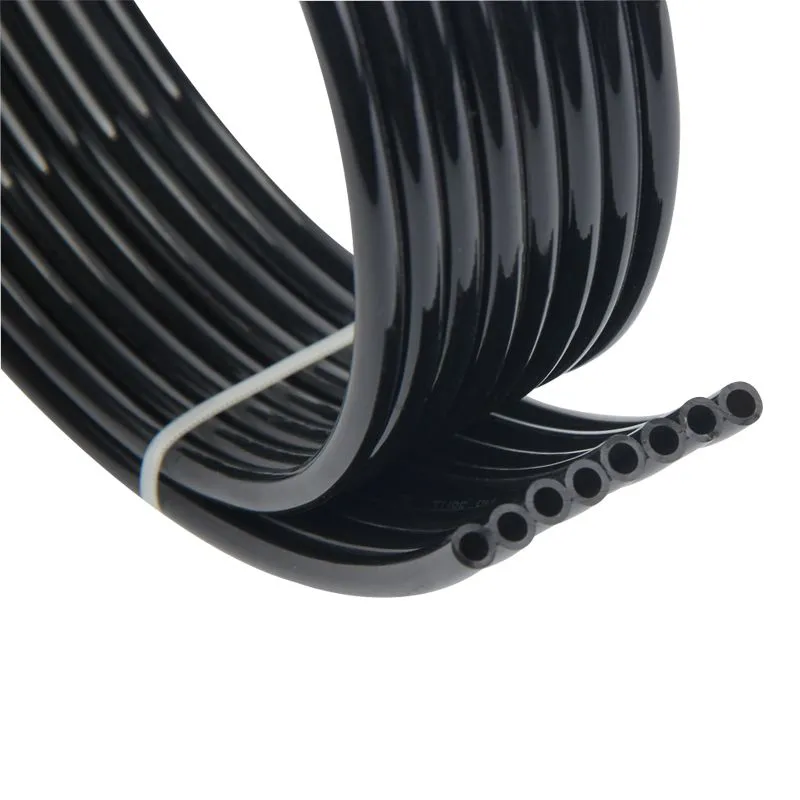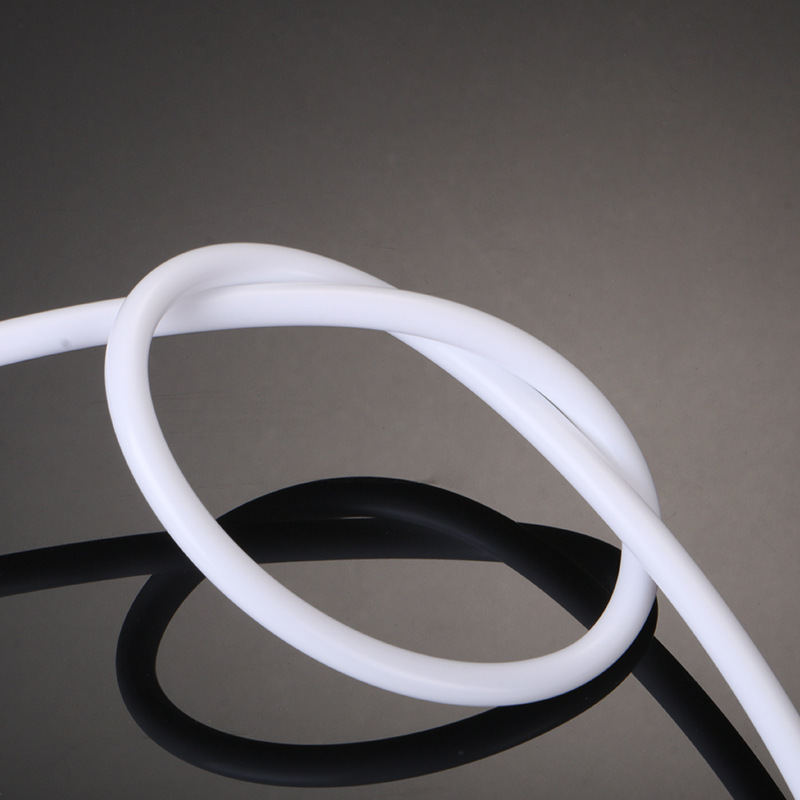When it comes to selecting the right air hose for pneumatic applications, understanding the differences between polyurethane (PU) and polyethylene (PE) air hoses is crucial. Both materials are widely used in various industries, but they offer distinct advantages and disadvantages that can significantly impact performance, durability, and cost-effectiveness. This comprehensive guide will explore the characteristics, applications, and underlying principles of both polyurethane and polyethylene air hoses, helping you make an informed decision that meets your specific needs.
Understanding Air Hoses
Air hoses are essential components in pneumatic systems, which use compressed air to transmit energy and perform work. The choice of air hose material can affect the efficiency, safety, and longevity of the entire pneumatic system. Therefore, selecting the right type of air hose is critical for ensuring optimal performance in applications ranging from manufacturing to automotive and construction.
The Role of Air Hoses in Pneumatic Systems
Air hoses serve as conduits for compressed air, connecting various components such as compressors, valves, and pneumatic tools. They must be able to withstand pressure, resist wear and tear, and maintain flexibility to facilitate movement. The right air hose can enhance the efficiency of pneumatic systems, reduce downtime, and improve overall productivity.

What is Polyurethane Air Hose?
Polyurethane air hose is made from a synthetic polymer known for its exceptional flexibility, durability, and resistance to abrasion. Polyurethane is a versatile material that can be formulated to achieve different hardness levels, making it suitable for a wide range of applications.
Key Properties of Polyurethane Air Hose
- Flexibility: One of the standout features of PU air hoses is their flexibility. They can bend and twist without kinking, allowing for easy maneuverability in tight spaces. This flexibility reduces the risk of air flow restrictions, which can occur with stiffer hoses.
- Durability: Polyurethane is highly resistant to abrasion, making PU hoses ideal for environments where they may come into contact with rough surfaces or sharp edges. This durability extends the lifespan of the hose, reducing the need for frequent replacements.
- Temperature Resistance: PU hoses can typically handle a wide temperature range, from -40°F to 180°F (-40°C to 82°C). This makes them suitable for various applications, including those that involve exposure to extreme temperatures.
- Chemical Resistance: While not as chemically resistant as polyethylene, PU hoses can withstand exposure to many oils, solvents, and chemicals, making them versatile for different environments.
- Lightweight Design: PU hoses are generally lighter than many other materials, making them easier to handle and transport. This lightweight nature reduces operator fatigue during prolonged use.
Common Applications of PU Air Hoses
Polyurethane air hoses are widely used in various industries, including:
- Manufacturing: For powering pneumatic tools and equipment, such as drills, wrenches, and actuators.
- Automotive: In assembly lines and for air-powered tools, where flexibility and durability are essential.
- Construction: For air supply in pneumatic nailers, staplers, and other tools that require reliable air delivery.
- Robotics: In robotic systems where lightweight and flexible hoses are necessary for movement and operation.

What is Polyethylene Air Hose?
Polyethylene air hose is made from a thermoplastic polymer that is lightweight and offers good chemical resistance. Polyethylene is a simpler polymer compared to polyurethane, which affects its properties and applications.
Key Properties of Polyethylene Air Hose
- Lightweight: One of the most significant advantages of PE hoses is their lightweight nature. This makes them easy to handle, transport, and install, reducing operator fatigue during use.
- Chemical Resistance: Polyethylene is known for its excellent chemical resistance, making it suitable for applications involving exposure to oils, solvents, and other chemicals. This property is particularly beneficial in agricultural and food processing applications.
- Temperature Tolerance: While PE hoses can handle moderate temperatures, they typically perform best in environments ranging from -30°F to 140°F (-34°C to 60°C). They may become brittle in extremely cold temperatures, which can limit their flexibility.
- Cost-Effectiveness: Polyethylene hoses are generally more affordable than polyurethane hoses, making them a budget-friendly option for many applications.
- Good UV Resistance: PE hoses have decent resistance to UV light, which helps prevent degradation when exposed to sunlight over extended periods.
Common Applications of PE Air Hoses
Polyethylene air hoses are commonly found in various applications, including:
- Agriculture: For irrigation systems, chemical spraying, and fluid transfer, where lightweight and chemical-resistant hoses are essential.
- Food Processing: In applications requiring food-safe materials, such as transferring liquids and gases in food production.
- General Industrial Use: For air and fluid transfer in various settings, including workshops and manufacturing facilities.
What are the Key Differences Between Polyurethane and Polyethylene Air Hoses?
Understanding the key differences between polyurethane and polyethylene air hoses is essential for selecting the right material for your specific application. Here’s a detailed comparison:
Material Composition
The primary difference between PU and PE hoses lies in their chemical structure. Polyurethane is a more complex polymer that offers enhanced flexibility and durability, while polyethylene is a simpler polymer that provides lightweight and chemical-resistant properties. This difference in composition leads to variations in performance and application suitability.
Flexibility and Handling
PU hoses excel in flexibility, making them easier to maneuver in tight spaces. This flexibility reduces the risk of kinking, which can impede airflow. In contrast, PE hoses, while still flexible, may not offer the same level of maneuverability, especially in colder temperatures where they can become stiffer.
Durability and Wear Resistance
When it comes to durability, PU hoses are generally more resistant to abrasion and wear, making them suitable for harsher environments. PE hoses, while durable, may not withstand the same level of physical stress and can be more prone to damage from sharp objects. This difference is crucial in applications where hoses are subjected to rough handling or abrasive surfaces.
Temperature and Chemical Resistance
PU hoses can handle a wider temperature range compared to PE hoses, making them more versatile for various applications. However, PE hoses have superior chemical resistance, making them ideal for applications involving exposure to oils and solvents. This distinction is vital when considering the specific environmental conditions in which the hoses will be used.
Cost Considerations
Polyethylene hoses are generally more affordable than polyurethane hoses, making them a cost-effective option for many applications. However, the initial cost should be weighed against the long-term performance and durability of the hoses. In applications where durability and flexibility are critical, investing in PU hoses may provide better value over time.
| Feature | Polyurethane (PU) Air Hose | Polyethylene (PE) Air Hose |
|---|---|---|
| Material Composition | Complex polymer with enhanced flexibility | Simpler thermoplastic polymer |
| Flexibility | Highly flexible, excellent for tight spaces | Moderate flexibility, can become stiffer in cold |
| Durability | High abrasion resistance, suitable for rugged environments | Good durability, but less resistant to abrasion |
| Temperature Resistance | -40°F to 180°F (-40°C to 82°C) | -30°F to 140°F (-34°C to 60°C) |
| Chemical Resistance | Moderate, can withstand many oils and solvents | Excellent, suitable for exposure to various chemicals |
| Weight | Lightweight, easy to handle | Very lightweight, reduces operator fatigue |
| Cost | Generally more expensive | More cost-effective |
| Common Applications | Manufacturing, automotive, construction | Agriculture, food processing, general industrial use |

What are the Advantages and Disadvantages of Polyurethane Air Hoses?
Advantages of PU Air Hoses
- Superior Flexibility: PU hoses are ideal for applications requiring tight bends and maneuverability, reducing the risk of kinking and air flow restrictions.
- High Abrasion Resistance: PU hoses are suitable for rugged environments where wear and tear are concerns, extending the lifespan of the hose.
- Wide Temperature Range: PU hoses can operate effectively in various temperature conditions, making them versatile for different applications.
- Lightweight Design: The lightweight nature of PU hoses reduces operator fatigue during prolonged use, enhancing productivity.
Disadvantages of PU Air Hoses
- Cost: PU hoses can be more expensive than their polyethylene counterparts, which may be a consideration for budget-conscious projects.
- Limited Chemical Resistance: While PU hoses can withstand exposure to many chemicals, they may not be suitable for all chemical environments, particularly those involving aggressive solvents.
What are the Advantages and Disadvantages of Polyethylene Air Hoses?
Advantages of PE Air Hoses
- Lightweight: PE hoses are easy to handle and transport, reducing fatigue during use.
- Cost-Effective: Generally more affordable than PU hoses, making them a budget-friendly option for many applications.
- Good Chemical Resistance: PE hoses are suitable for applications involving exposure to various chemicals, enhancing their usability in specific environments.
- Decent UV Resistance: PE hoses can withstand UV exposure, making them suitable for outdoor applications.
Disadvantages of PE Air Hoses
- Reduced Flexibility: PE hoses may become stiffer in cold temperatures, making handling more challenging and increasing the risk of kinking.
- Lower Durability: PE hoses are less resistant to abrasion compared to PU hoses, which can lead to quicker wear in demanding environments.

How to Choose Between Polyurethane and Polyethylene Air Hoses for Your Application?
When deciding between polyurethane and polyethylene air hoses, consider the following factors:
1. Application Requirements
Define the specific needs of your project. Are you working in a rugged environment where durability is key, or do you need a lightweight hose for easy handling? Understanding the application requirements will guide your material selection.
2. Physical Properties
Evaluate the physical properties required for your application. Do you need flexibility, strength, or chemical resistance? Understanding these requirements will help you choose the right hose material.
3. Cost and Availability
Consider your budget and the availability of materials. While PU may offer superior performance, it’s essential to weigh the costs against the benefits. In some cases, a more affordable PE hose may meet your needs without compromising performance.
4. Environmental Conditions
Assess the environmental conditions in which the hoses will be used. Will they be exposed to extreme temperatures, chemicals, or abrasive surfaces? Understanding these factors will help you select a hose that can withstand the specific challenges of your application.
5. Expert Consultation
Don’t hesitate to consult with industry experts. Their insights can help you make informed decisions tailored to your specific needs. They can provide valuable information on the latest materials and technologies available in the market.
Conclusion
Understanding the differences between polyurethane and polyethylene air hoses is essential for optimizing performance in various pneumatic applications. PU hoses offer superior flexibility and durability, making them ideal for demanding environments, while PE hoses provide lightweight and cost-effective solutions for less rigorous applications. By assessing your specific requirements and consulting with experts, you can make informed decisions that enhance your project’s efficiency and reliability. If you have any questions or need further assistance, feel free to reach out for expert consultations and product inquiries.

